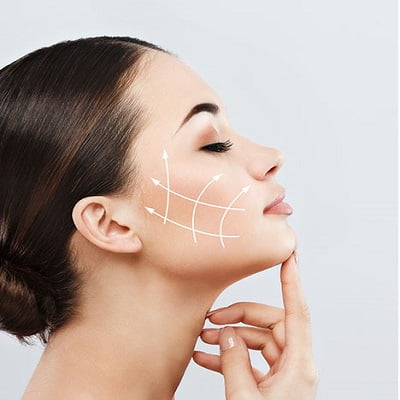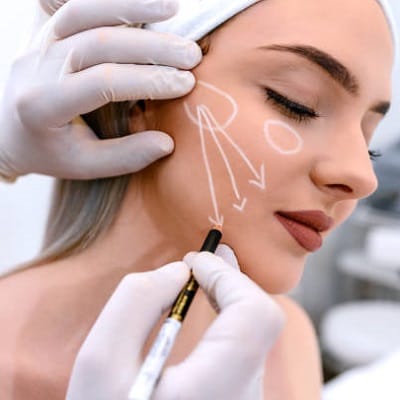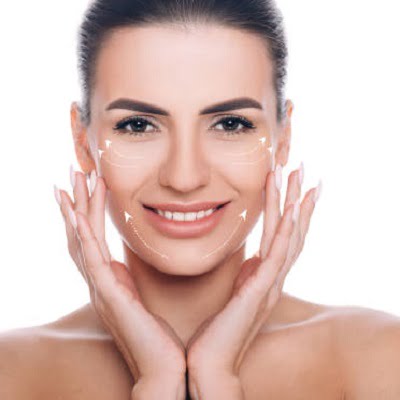
Facelift surgery in Islamabad – is a popular cosmetic procedure that aims to address signs of ageing by tightening facial muscles and removing excess skin. When performed by a skilled and experienced surgeon, facelifts can produce remarkable and rejuvenating results. However, there are instances when a facelift does not turn out as expected, leading to undesirable outcomes and complications.
In such cases, patients may wonder if it is possible to correct a bad facelift. This informative blog will explore the various aspects of revision procedures and techniques to address a poorly executed facelift.
Factors Contributing to a Bad Facelift:
A bad facelift can be caused by a combination of factors, including surgical errors, inadequate planning, insufficient experience of the surgeon, and unrealistic patient expectations.
Common issues arising from a bad facelift may include an unnatural appearance, asymmetry, visible scarring, hairline distortion, and nerve damage. Additionally, poor surgical techniques can result in limited mobility, skin irregularities, and a “pulled” or “windblown” appearance.
The Importance of Choosing the Right Surgeon:
Prevention is always better than correction, making it crucial to select a highly qualified and experienced board-certified plastic surgeon for the initial facelift procedure. Patients should thoroughly research the surgeon’s credentials, read reviews, and view before-and-after photos of their previous work.
A skilled surgeon will listen to the patient’s concerns and goals, assess their facial anatomy, and create a personalized surgical plan to achieve natural and harmonious results.
Non-Surgical Corrective Options:
In some cases, minor imperfections or early signs of complications following a facelift can be addressed with non-surgical corrective treatments. Dermal fillers, Botox, and other injectables can help to smoothen out wrinkles, restore facial volume, and improve facial symmetry. These minimally invasive procedures can be effective in certain situations but are not suitable for more significant corrective needs.
Revision Facelift Surgery:
When a bad facelift requires more extensive correction, revision facelift surgery becomes necessary. This procedure is considerably more complex than the initial facelift and demands a surgeon with specialized skills in revision techniques.
During a revision facelift, the surgeon will carefully assess the patient’s unique situation and develop a detailed plan to address the specific issues caused by the previous surgery.
Common Correctional Techniques:
- Scar Revision: Scar tissue from the initial facelift can sometimes be corrected, reduced, or relocated to less visible areas through revision surgery. Skilled surgeons employ advanced techniques to create less noticeable scars.
- Facial Fat Grafting: To correct facial volume irregularities or asymmetry, fat grafting can be performed. It involves transferring fat from one part of the body to the face to restore lost volume and improve overall facial contours.
- Tissue Repositioning: A bad facelift may have resulted in skin and muscle being pulled excessively in the wrong direction. Revision surgery can reposition these tissues for a more natural and balanced appearance.
- Muscle Repair: When underlying facial muscles are damaged or weakened during a bad facelift, a revision procedure can address these issues to restore proper facial movement and function.
- Nerve Repair: In some cases, a bad facelift may cause nerve damage, leading to facial paralysis or diminished sensation. Revision surgery can focus on nerve repair to improve facial nerve function.
Realistic Expectations and Psychological Considerations:
It is crucial for patients considering a revision facelift to have realistic expectations about the outcomes. Revision surgery can significantly improve the results of a bad facelift, but complete restoration to pre-surgery appearance may not always be achievable.
Additionally, patients should be aware that revision facelifts can be emotionally taxing. Before undergoing any corrective procedure, patients should discuss their concerns with their surgeon and seek psychological support if needed.
All Summed Up!
While the goal of any facelift is to achieve a natural and youthful appearance, there are instances where a bad facelift can occur. However, thanks to advancements in plastic surgery techniques and the expertise of skilled surgeons, it is often possible to correct the issues resulting from a bad facelift through revision procedures.
Patients should conduct thorough research, select a qualified surgeon from SKN Cosmetic Clinic Islamabad, and communicate openly about their expectations to ensure the best possible outcomes. Ultimately, a successful revision facelift can restore confidence and enhance the patient’s overall quality of life.



